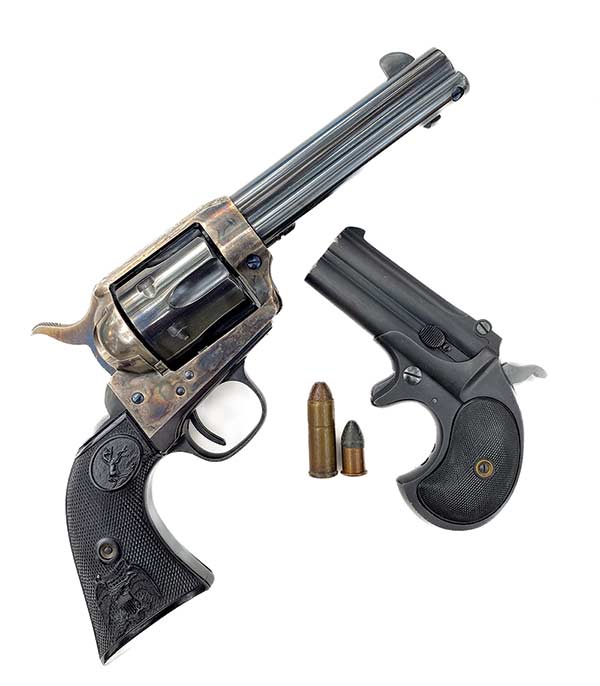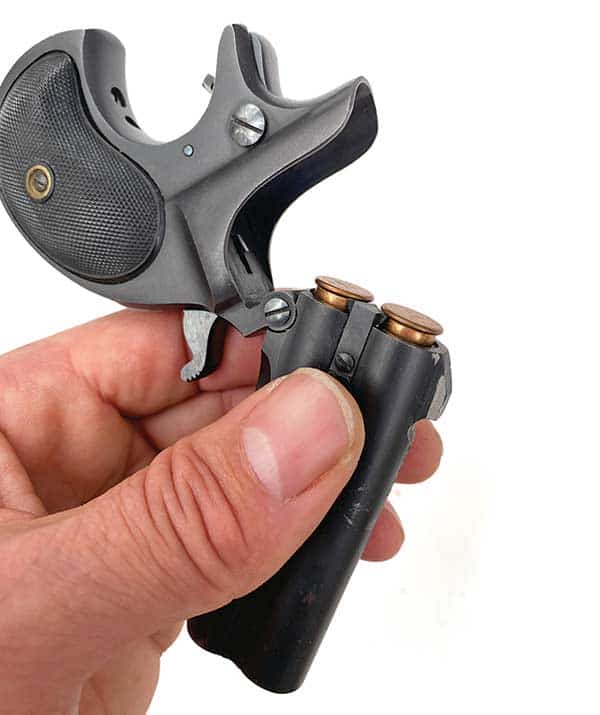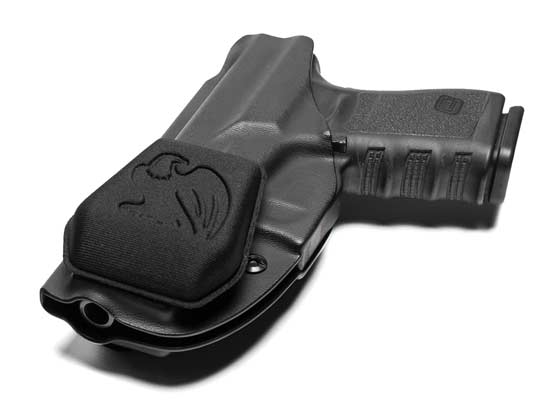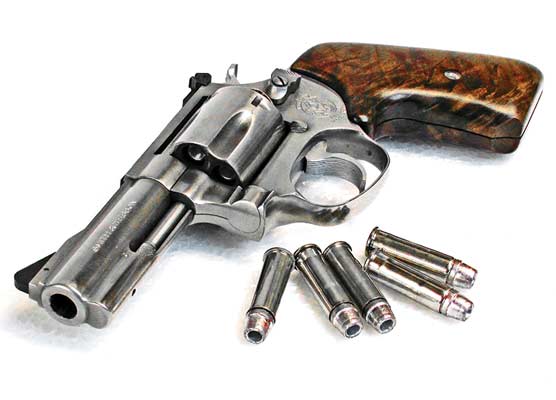Remington’s Double Derringer:
An Idea Too Good To Die
You know a firearm is iconic when it represents an entire class of weapons. Such is the case with a little two-shot, over-and-under .41 Short Rimfire, variously called a Remington Model 95, Remington-Elliot Derringer, Remington Double Derringer, or most commonly, simply … a derringer. Most of us know it from Western genre cinema and television, but it was famous before motion pictures. Its design was patented in 1865 by William H. Elliot, a New York dentist. He was granted over 130 patents for his firearms inventions, and his accomplishments are worthy of book-length studies, but the double derringer was his most enduring. Remington made and sold the guns from 1866 to 1935, with production estimates between 132,000 and 150,000.
While more mechanically advanced pocket guns with more firepower and more potent chamberings would share the deep concealment market with the Remington Double Derringer, few are remembered today. I find it especially interesting that Colt’s high-quality pocket guns of the early metallic cartridge era came and went while Remington’s Double-Derringer just kept selling.
Elegant Economy
Efficiently designed with only 26 parts, including its clever ratcheting firing pin that alternated between barrels, the pistols used cast iron frames like most cheaper gun brands of the day. However, the Remington Double Derringer was quite well-made and finished and by no means a low-priced gun. I found advertised prices from $8 in 1877 to $9.50 in 1918 during the First World War. The 1909 Sears, Roebuck & Co. mail order catalog listed them for a bargain $4.25. The same catalog had low-end but fair quality, cast iron solid frame, pocket revolvers from Harrington & Richardson in .32 and .38 S&W centerfire for only $1.64.
Studying my own Remington Double Derringer, I saw the secret of its success in the palm of my hand. You don’t need big hands to make the gun disappear. It was the ideal deep concealment, close range, self-defense gun of last resort. It measured 4.86″ long by 3.2″ tall by 1.16″ thick at the fattest point of the grip, weighed just 12 oz. empty and was chambered in the heaviest derringer cartridge around in 1866. It struck the right balance between extremely small size and light weight, simple and reliable operation, good handling characteristics and manageable recoil, and potential lethality. I say potential because the .41 Short Rimfire was not as ballistically intimidating as this little pistol’s gaping dual muzzles likely made it seem to a person looking down them.
Designed from the start as a short-range derringer cartridge, the .41 Short Rimfire was introduced in 1863. Researching 18th- and 19th-century ammunition catalogs showed 130-grain bullets were the norm, but the charge of black powder proved more elusive. I found evidence of 10- and 13-grain charges. I found no velocity data from the 1800s and have doubts about the manufacturer’s data published in the 1900s. Suffice it to say, the velocity was likely between 425 and 550 feet per second at the muzzle. It was not a powerful cartridge by today’s or even by 1900’s standards. The 148-grain bullet of the .38 S&W introduced in 1877 had more wallop.

These derringers are often hard to date with precision because batch
numbers were used rather than serial numbers. How the manufacturer’s
name is stamped on top of the barrel will give you an age range. This
unfired gun was made between 1922 and 1929 and is referred to by
collectors as a 3rd Model, or a Late 4th Model, 2nd Variation. Yikes!
Practical Application
Anecdotal evidence says the .41 Short Rimfire bounced off trees. However, human bodies are not made of wood, and any penetrating wound could, and often did, lead to secondary infection. Without antibiotics, any infection could be lethal. In effect, at close range, the .41 Short Rimfire bullet, and even the .22 Short Rimfire that most derringers were chambered for, could kill you just as dead as a .45 Colt; it just might take you longer to die. Since most people seek to avoid death, we can speculate that pipsqueak derringers might have had a lot more deterrent effect than their size, power and accuracy appear to warrant.
Derringers are carried a lot and shot very little, and that probably contributed to the demise of the Remington Double Derringer more than anything else. By the early 1930s, American ammunition manufacturers quit making the old black powder rimfire cartridges. The .41 Short Rimfire hung on a little longer as a smokeless cartridge, but after 1946, that was dropped too. When the ammo ran out, those trustworthy double-derringer guardians of life, treasure and feminine virtue made their last journey from pocket to dresser drawer.
Yet the double derringer concept did not die. The post-World War Two rise of television caused an explosion of popularity for the Western genre. By the mid-1950s, Great Western Arms was making a close replica of the Remington Double Derringer chambered in more potent .38 S&W and .38 Special. Other manufacturers soon followed with over and under derringers intended specifically for self-defense. Some were of excellent quality, but most catered to the low end of the market, utilizing zinc castings for the frames. Today, Texas-based Bond Arms (BondArms.com) makes the widest variety of high-quality derringers inspired by the Remington icon but modernized with trigger guards and interchangeable barrels for rimfire and centerfire calibers up to .45 Colt/.410 shotgun. Good ideas are hard to kill.









